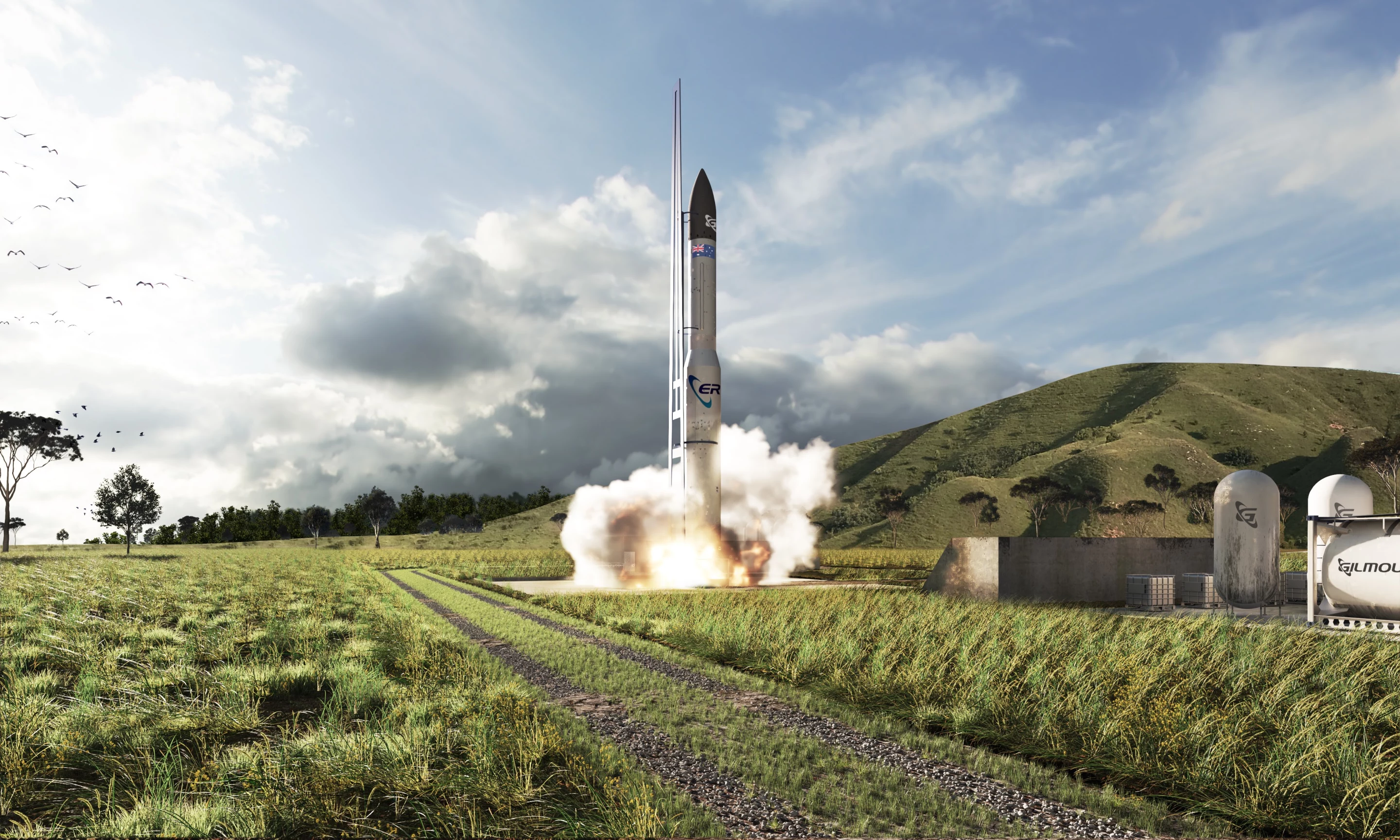Equipmake says it's got the lightest and most power-dense electric motor on the market, and if there's one place where weight is critical, it's on a launch pad. The company has developed an ultra-lightweight motor for Australia's first rocket launch.
Queensland-based Gilmour Space Technologies is on the home stretch making preparations for the launch of its three-stage Eris orbital launch vehicle next April. It'll be the first orbital launch attempt of an Australian designed and built rocket, and the company hopes it'll represent the beginning of a new space launch industry Down Under.
Rather than acting as a supplier to other rocket companies overseas, Gilmour has built its own machine from the ground up. Standing 25 m (82 ft) high, it has a first-stage diameter of 2 m (6.6 ft), and a second-stage diameter of 1.5 m (4.9 ft), and it's designed to take a payload mass up to 305 kg (672 lb) up as high as 500 km (311 miles) for delivery to sun-synchronous or equatorial orbits.
The Eris will be powered by five of Gilmour's own Sirius rocket engines. This is a hybrid engine, meaning it uses a liquid oxidizer but a solid fuel. In a final bench test to destruction, it generated 115 kilonewtons (25,850 lbf) and burned for more than 90 seconds before exploding.
"This is the most powerful rocket engine ever developed in Australia," said Gilmour Space CEO and co-founder Adam Gilmour, "and it achieved its mission duration requirement before failure." You can see that test in the video below.
On board the Sirius engine is a component familiar to us: Equipmake's spoked-magnet electric motor, which we first wrote about back in 2018, and revisited again in 2020 when the company announced its Ampere motor would be the most power-dense electric motor in the world, beating even Koenigsegg's "Raxial Flux" Quark motor.
With weight being at an absolute premium in the rocket game, Gilmour engaged Equipmake to design and build the electric motors for Sirius.
"Gilmour approached us to put a proposal together for a very, very lightweight motor and inverter," Equipmake CEO and former Formula One engineer Ian Foley tells us over a video call. "That's super interesting for us, because of course it starts off in atmosphere on Earth, and two minutes later you're in a vacuum, dealing with incredible acceleration the whole time. The design requirements were unlike anything we've done before."
The electric motors and inverters, of which there are several in each rocket, are there to pump fuel. And the inverters in particular look unique as compared to terrestrial inverters.
"Normally, the inverter is a square box," says Foley, "that's the easiest way to make them. But this one needs to work in a vacuum. It needs to be high voltage, because you want lots of power. But when you have two conductors at high voltage in a vacuum, you get a phenomenon called partial discharge. Take a fluorescent tube; that's in a vacuum, and the charge can jump across that."

"So we had to design the inverter to keep air pressure inside," he continues. "We had to completely redesign it mechanically, to withstand the pressure from within when it goes from the atmosphere into the vacuum. So it ends up being close to cylindrical, with a carbon fiber shell to keep the pressure in and the weight down."
Electronically, the space motor runs the latest power switches from Wolfspeed, made using silicon carbide. This is an insanely difficult material to work with, but it results in lighter weight and higher efficiency than standard gear. "This pushes things further in the inverter than we have done before," says Foley, "and this stuff always does cascade through. We developed it for aerospace, but we're about to launch our silicon carbide inverter for buses."
"The big thing for automotive is that it's more efficient," continues Foley. "Typically, people are reporting about a 5% increase in range, because the losses in silicon carbide are much lower than a conventional inverter. At the moment, it's more expensive, but then so are batteries, so you can come up with a business case. EVs are at the stage now of incremental development, so a 5% increase in range is a big result from one technology step."
Gilmour has stated an ambition to scale up its rockets to be capable of launching manned space flights. It seems unlikely that battery-powered electric powertrains, no matter how lightweight the motors and inverters, will be able to move the amount of fuel these larger rockets will require. SpaceX's Elon Musk explains the problem in the tweet below, discussing why SpaceX isn't using Tesla's electric motors to pump propellant in the Raptor engines which will power the Starship rocket.
Raptor pump power is over 100MW per engine & 33 engines, means over 3GW. Not even remotely possible for electric motors & batteries to compete.
— Elon Musk (@elonmusk) April 3, 2022
Sources: Equipmake, Gilmour Space Technologies






